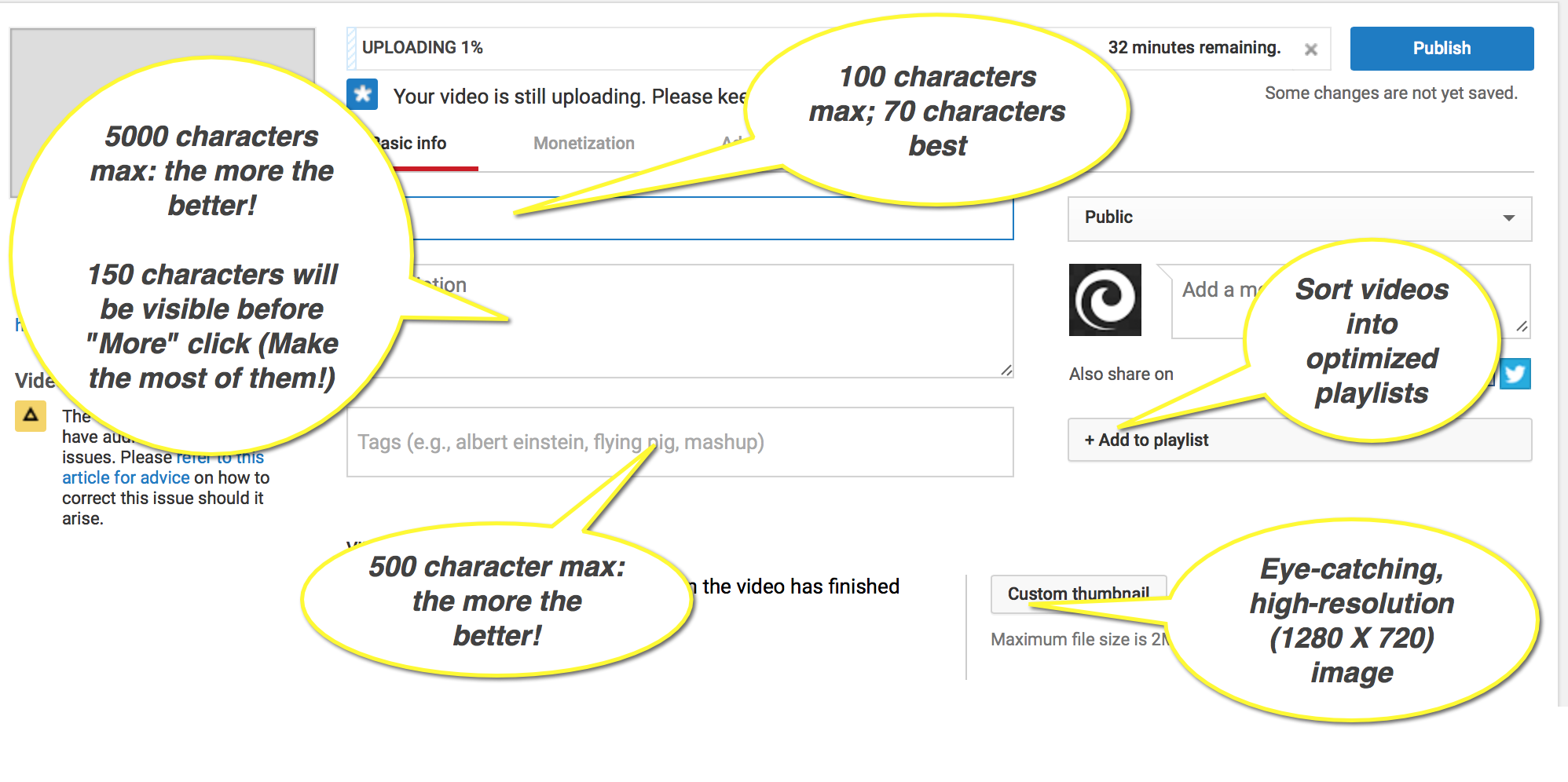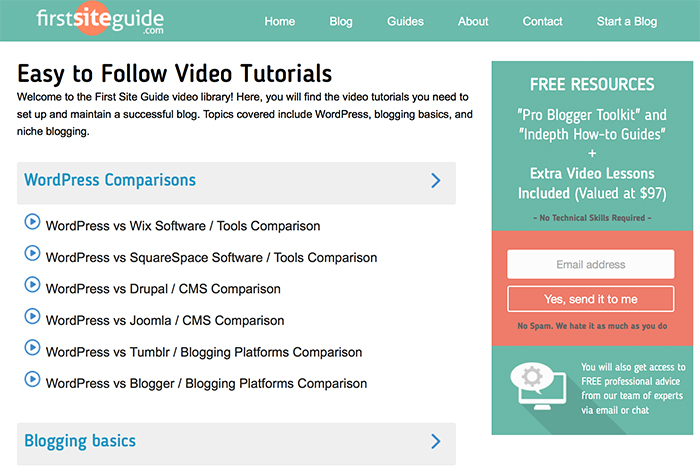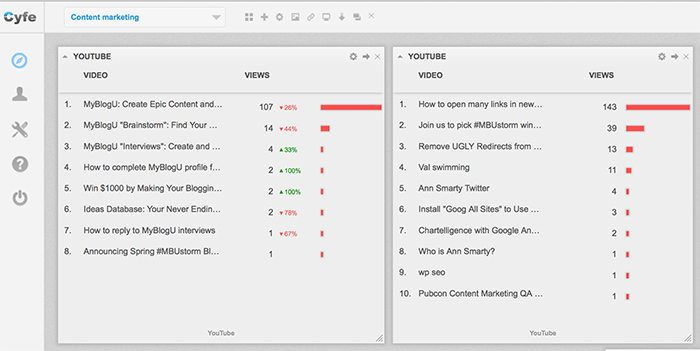Video marketing is standard in today’s world. If you want to reach a mass audience, blog posts just aren’t enough anymore. Even podcasters are creating video versions of episodes to post on YouTube, even if there is no visual other than a title card.
And you know what? It works. Posting a secondary version in video format increases reach and improves brand visibility. With a billion users, YouTube is the second largest search engine in the world, Entrepreneur reports, and according to the site itself, users upload 300 hours of content to the site every minute. Not taking advantage of video marketing is going to cost you potential growth both in the short and long run. You just can’t afford not to be there.
YouTube video marketing checklist

Sharing a video in YouTube is more than just uploading it. Follow these steps to get the most out of your video marketing efforts:
1. Upload to YouTube
- Come up with the original video title (under 70 characters is best; YouTube’s limit is 100 characters).
- Write an original video description using your target key phrase at least once.
- Tip #1: YouTube character limit for descriptions is 5,000, so write a long, original description to improve the video’s chances of ranking in Google.
- Tip #2: About 150 characters of the description will be visible below the video without a click, so put your most interesting part first.
- Tip #3: If you are covering an event or featuring a person, mention it (him/her) in the title of the video and include the official hashtag. This attracts other attendees to your video.
- Add at least 10 tags. The more tags, the better. YouTube has a 500-character limit in tags.
- Add an eye-catching, high-resolution (1280 X 720) video thumbnail i.e., the image people see in the “Suggested” and “Related videos” areas as well as the YouTube and Google search results.This will help your video stand out. Use consistent branding to make your videos recognizable.
- Group your videos into playlists. This will increase your exposure in search as well as add relevant meta data to your channel.
- Tip: YouTube allows each playlist to have a title and description. Make sure you target your major keywords in each one.
2. When your video is live
- Add a call to action. Annotate the video with community CTAs, a subscribe button and links to related content (learn more about Annotations vs. Cards here).
- Tip: You can link back to your site from inside the video with the call to action of your choice, provided your domain is verified with that YouTube channel. You can also link to related video you’d like visitors to view next.
- Note: YouTube uses video engagement metrics to rank your videos (namely, how many people actually viewed your video instead of bouncing), so driving people away from your video may decrease your video organic visibility. If you want your videos to rank, it may be smarter to include your calls to action closer to the end.
- Engage with all the comments to the video (reply, thank, follow those who comment, etc.)
- Create a video directory on your site that organizes your videos and gives your users a single place to access all your videos. FirstSiteGuide is the perfect example of getting this right.
Other video sharing sites
YouTube is the natural platform for video sharing. But you shouldn’t only be posting to YouTube, especially now that so many companies have gone copyright happy, shutting down videos that just mention their brand (whether it is technically copyright infringement or not). It is a worrisome trend, one that points to a necessary shift in policy.
Maintaining a few alternative active video marketing channels is a good idea. There are several powerful video marketing channels out there, some of them niche-focused. They have smaller, dedicated audiences who are more likely to engage — plus, it is easier to be seen on these alternatives, thanks to fewer competing uploaders.
While the alternative site you use will depend on your needs, here are some options:
Vimeo
Vimeo has long since been considered the primary alternative to YouTube, despite some major differences. The biggest ones are the kind of content it attracts and the reason for its existence.
From the very beginning, Vimeo has been focused on visual creation and creative releases. Independent films with very low budgets have been launched there. Design, film and art students upload projects. Videos created as teasers for crowdfunding campaigns thrive. It is a video platform for artists and filmmakers, and so it is less practically minded than YouTube. You aren’t as likely to see video blogs make it big here, and production (regardless of level and scale) are prized above view count tactics.
Marketing videos can be successful on Vimeo if they show creative clout and will often be held up as an example of the medium when done right.
DailyMotion
DailyMotion is a good mix between popular and uncrowded, which makes it a good choice for many video marketers. It has a million views per month, on average. That is far from the billion users on YouTube, which is its strength.
The quality of the videos that get popular also tends to be higher. There is less chance of a fluke success here. Yet, they still have an official presence from brands, and that shows you that they have made it from the rinky-dink beginnings to a real powerhouse on the Web.
Micro-video platforms
Consider creating a funny micro-video to use on these alternative platforms, which are quickly gaining in popularity:
Vine
Vine is an interesting platform. Its meteoric rise has been astonishing, even when you consider Twitter launched it. You have 6.5 seconds to create a video that catches users’ attention enough that they share it.
It sounds impossible, and yet Vines have become some of the most popular content on the Web. If you are feeling especially creative, make your own 6.5-second marketing videos to share. Who knows, you could become a sensation.
Instagram
Instagram is another platform for releasing short clips. Instagram is ideal for those who feel a bit too constrained by that 6.5-second rule. You have up to 15 seconds, which is a lifetime when you are dealing with this style of content.
You can show and tell a great deal in that time. A great example of this comes from a friend of mine who uses a personal Instagram account to boost visibility of her brand. She recently started releasing videos of her dog doing physical activities with her, such as hiking. In addition to this, she fixed a fitness tracker to her dog, so she could upload screenshots of his step counts along with the videos. It was a quirky idea that really paid off… people love these videos.
Using multiple platforms
You could always use several of these platforms to get the more reach. Just because you are on YouTube doesn’t mean you can’t be on Vimeo. The more you spread yourself, the more you will be seen — however, this doesn’t mean all you need to do is mass upload the same video around the Internet.
- Make sure you provide the original title and description each time you upload a video. Read more about video SEO here.
- Provide slightly different branding for each channel. Using Canva, it is easy to create templates once and then vary for each channel by editing video title and some original elements.
- Use video Sitemap to help Google crawl them.
- Use Schema.org to embed the videos to your site; this gives search engines more structured information about it.
- Use a social media dashboard to effectively monitor your channels. Cyfe is a great option — it supports Youtube, Vimeo, Instagram and Slideshare, and you can use this tutorial to add custom accounts to your dashboard. I use Cyfe to track top videos, likes, engagement, etc., across many video sharing accounts (personal, company and clients).
Self-Hosting Your Own Videos
In most cases, I advise against hosting your own videos, because it’s difficult to find a reliable hosting company that can handle that sort of bandwidth. However, I’d keep that content in the cloud, in case I need any videos in the future. Amazon S3 works well for that; you can also use SiteGeek to find more options.
These alternatives are a great place to put most of your video marketing efforts while using YouTube as your primary platform.
If you need help with your video content creation, talk to one of our specialists today to learn how we can take your videos to the next level.





